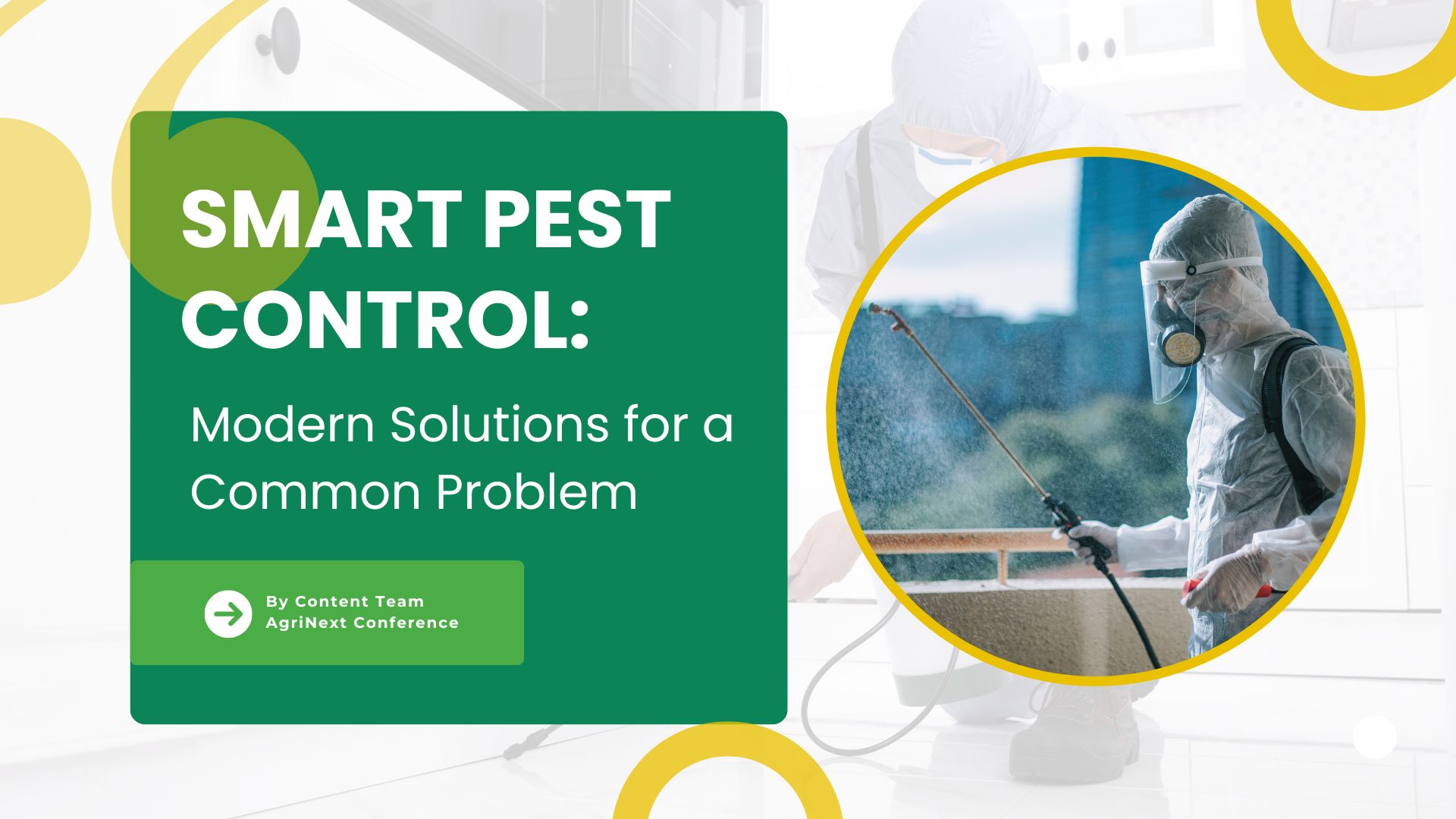
Introduction
Pests have always been a major challenge for farmers, causing damage to crops and reducing yields. Historically, traditional pest control methods often involved heavy use of chemical pesticides, which can harm the environment and human health. With increasing awareness and technological advancements, smart pest control offers modern, eco-friendly solutions that can help manage pests effectively without the downsides of conventional methods. According to the Food and Agriculture Organization (FAO), pests are responsible for up to 40% of global crop losses annually, highlighting the critical need for effective pest management.
What is Smart Pest Control?
Smart pest control uses technology and innovative techniques to monitor and manage pests in a more precise and sustainable way. It combines various methods to create an integrated pest management (IPM) approach that is less dependent on chemicals. IPM emphasizes the use of comprehensive information on the life cycles of pests and their interaction with the environment to manage pest damage economically and with the least possible hazard to people, property, and the environment.
Key Components of Smart Pest Control
Monitoring and Data Collection
Sensors and Traps
Modern sensors and traps can detect pest activity early, allowing farmers to take action before infestations become severe. These devices can send real-time data to a central system, helping farmers make informed decisions quickly. For example, pheromone traps used for monitoring moth populations can alert farmers to the presence of pests before they lay eggs.
Drones and Satellites
Drones and satellite imagery can monitor large fields, identifying pest hotspots and areas of crop stress. Companies like AgEagle and PrecisionHawk provide advanced aerial imaging services that help farmers detect and address pest problems promptly.
Biological Control
Beneficial Insects
Introducing natural predators or parasites that target specific pests. Examples include:
Ladybugs : used to control aphids.
Lacewings: Lacewing larvae feed on a variety of pests including aphids, mites, and whiteflies, making them highly effective for pest control in gardens.
Parasitic Wasps: These wasps lay their eggs inside caterpillars and other pest insects. As the wasp larvae develop, they consume the host insect from the inside out, effectively controlling populations of pests like caterpillars and aphids.
Biopesticides
Using natural substances like bacteria or fungi that are toxic to pests but safe for humans and the environment.Bacillus thuringiensis (Bt) is a well-known biopesticide that targets specific insects without harming beneficial insects or wildlife.
Precision Application
Targeted Spraying
Advanced equipment can apply pesticides only where needed, reducing overall usage. GPS-guided systems ensure precise application, minimizing waste and environmental impact. Systems like John Deere’s See & Spray technology use machine learning to distinguish between crops and weeds, applying herbicides only where necessary.
Automated Systems
Robots and automated machinery
Robots can target pests accurately, minimizing human labour and exposure to chemicals. For instance, the Small Robot Company’s Tom robot autonomously scans fields for pests and weeds, allowing for precise treatment.
Cultural Practices
Crop Rotation
Changing the types of crops grown in an area to disrupt pest life cycles. This practice not only reduces pest populations but also improves soil health.
Companion Planting
Growing certain plants together to repel pests or attract beneficial insects.
Examples include
Tomatoes and Basil: Basil planted near tomatoes can repel tomato hornworms and improve the growth and flavour of tomatoes.
Marigolds and Cabbage: Marigolds can deter pests like aphids, whiteflies, and cabbage worms when planted near cabbage.
Digital Tools
Mobile Apps
Farmers can use apps to identify pests, receive treatment recommendations, and track pest control activities. Apps like Plantix and Agrio provide valuable resources for pest identification and management.
Data Analysis
Using big data and machine learning to predict pest outbreaks and optimize control strategies.Platforms like Taranis
offer detailed crop monitoring and predictive analytics to help farmers stay ahead of pest problems.
Benefits of Smart Pest Control
Reduced Chemical Use
Minimizes the need for harmful pesticides, leading to safer food and a healthier environment.This approach aligns with consumer demand for organic and sustainably grown produce.
Cost-Effective
Early detection and targeted treatments can lower costs associated with pest damage and excessive pesticide use. For instance, precision agriculture technologies can reduce pesticide use by up to 90%, according to the University of California Agriculture and Natural Resources.
Sustainability
Supports long-term agricultural sustainability by promoting eco-friendly practices. Smart pest control helps maintain biodiversity and soil health, crucial for sustainable farming.
Better Yields
Healthy crops with fewer pest problems can result in higher yields and better quality produce. Studies have shown that integrating smart pest control can lead to a 20-30% increase in crop yields.
Conclusion
Smart pest control represents the future of sustainable agriculture. By utilizing technology and innovative methods, farmers can effectively manage pests while protecting the environment and ensuring food safety. Adopting these smart solutions can lead to healthier crops, lower costs, and a more sustainable farming system. As the agricultural industry continues to evolve, smart pest control will play a pivotal role in meeting the growing demand for sustainable and efficient food production.
AgriNext Awards Conference & Expo
The AgriNext Awards Conference & Expo is a leading event in the agriculture sector, bringing together innovators, experts, and industry leaders to showcase advancements in agricultural technology. The conference features cutting-edge solutions in smart pest control, highlighting the integration of AI, IoT, and data analytics to create effective and sustainable pest management strategies. With sessions and exhibits dedicated to the latest innovations, AgriNext aims to address common agricultural challenges and promote practices that enhance productivity and sustainability.
Signup For AgriNext Conference Newsletter

